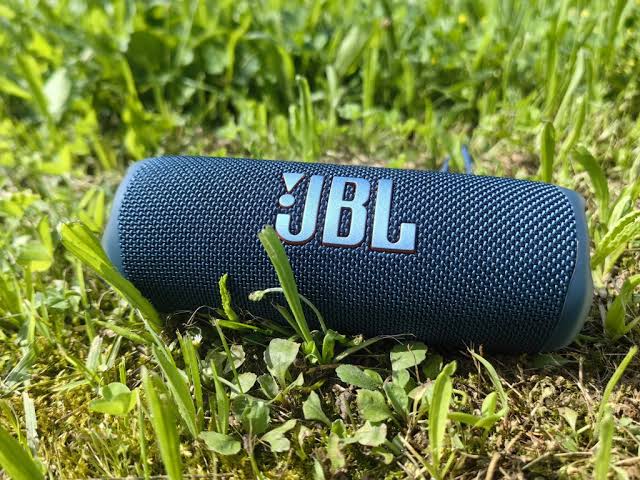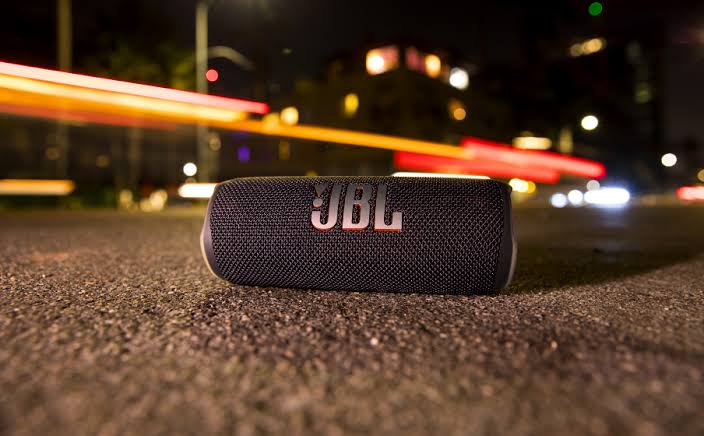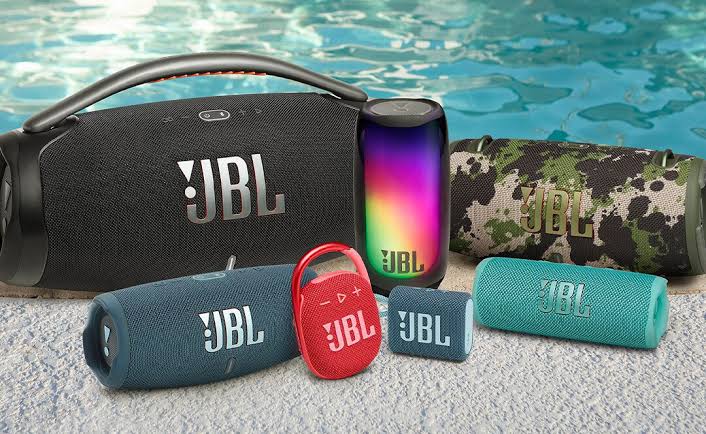A JBL speaker is more than just a device for playing music; it is a carefully designed piece of audio equipment that combines cutting-edge technology with superior sound quality. Renowned globally for their exceptional performance, JBL speakers cater to a wide range of needs, from compact portable devices for personal use to powerful systems for professional settings.
Designed with durability and ease of use in mind, these speakers offer rich, immersive sound, making them a favorite among music enthusiasts and professionals alike.
Whether you are listening to your favorite artist or experiencing the intricate riffs of a guitar virtuoso like Jimi Hendrix, a JBL speaker ensures every note is captured in its full glory. When you receive your JBL speaker, unboxing and setting it up is an essential step in ensuring optimal performance.
The process begins with carefully opening the packaging, which not only protects the device during transit but also enhances the anticipation of owning a premium product.
Inside the box, you will typically find the speaker, a charging cable, a quick-start guide, and occasionally, additional accessories such as a carrying strap or case for portable models. Unboxing a JBL speaker is not just a functional step; it is an experience that underscores the quality and precision of the product.
Once you have unboxed your speaker, the importance of setting it up properly cannot be overstated. Charging the device is one of the first tasks, as it ensures the speaker is ready for use without interruptions.
Most JBL speakers come with a partially charged battery to allow initial testing, but a full charge is recommended before extended use. This step not only prepares the device for its first outing but also helps maintain the longevity of the battery.
Connecting the speaker to a power source using the included charging cable is straightforward. Many JBL models feature a USB-C port for faster charging, while others may utilize a micro-USB connection. As you charge the speaker, it is an opportune time to familiarize yourself with its features, controls, and connectivity options.
JBL speakers are known for their user-friendly interfaces, often marked by intuitive buttons and LED indicators. These design elements make it simple to pair the speaker with your devices, whether through Bluetooth, auxiliary cables, or advanced wireless options.
Understanding these features during the initial setup ensures that your speaker is ready to deliver an uninterrupted listening experience. One of the most compelling reasons to properly charge and set up your JBL speaker is the enhanced audio quality it provides.
Whether you are hosting a gathering or enjoying a quiet moment with music, a well-configured speaker allows you to fully appreciate its performance. Listening to a classic Jimi Hendrix track, for example, is an entirely different experience when played on a JBL speaker that captures the depth of his guitar solos and the subtle nuances of his voice.
A fully charged battery ensures that the speaker performs consistently, maintaining sound clarity and volume levels without distortion. Charging the speaker correctly also has long-term benefits for its battery health.
Like most modern electronic devices, JBL speakers are equipped with lithium-ion batteries, which require specific care to ensure durability. It is advisable to use the original charging cable provided in the box to avoid compatibility issues.
Overcharging or using incompatible chargers can degrade the battery over time, affecting the device’s performance. By adhering to the recommended charging practices, you safeguard the longevity of your investment while ensuring consistent audio quality.
Another critical aspect of setting up your JBL speaker is exploring its connectivity options. Many models feature Bluetooth technology, enabling seamless pairing with smartphones, tablets, and other devices.
For those who prefer a wired connection, an auxiliary input is often available, providing versatility in how the speaker can be used. Modern JBL speakers may also include advanced features such as multi-speaker pairing or app integration for customized sound settings.
These options not only enhance the user experience but also allow you to tailor the sound to your preferences. The process of unboxing, charging, and setting up your JBL speaker also highlights the brand’s commitment to innovation and user satisfaction.
The packaging and design are carefully crafted to reflect the quality of the product, while the straightforward setup process ensures that even first-time users can enjoy their speaker without complications. This attention to detail is part of what makes JBL a trusted name in audio equipment.
The importance of setting up your JBL speaker extends beyond functionality. It is about creating a seamless connection between technology and your lifestyle.
A properly configured speaker becomes an integral part of your daily activities, whether it is enhancing your workouts, elevating your relaxation time, or adding energy to your social gatherings. It is also an essential tool for appreciating the artistry of musicians like Jimi Hendrix, whose work demands a sound system capable of delivering every intricate detail.
Read Also: How to Easily Find the Best Krispy Kreme Near You
How to Connect Your JBL Speaker via Bluetooth

Connecting your JBL speaker via Bluetooth allows you to enjoy exceptional audio quality wirelessly, making it a convenient option for listening to music, watching videos, or enhancing calls.
Known for their user-friendly design and advanced features, JBL speakers are compatible with a wide range of devices, including smartphones, tablets, laptops, and other Bluetooth-enabled gadgets. By following the steps below, you can connect your JBL speaker to your device effortlessly and enjoy a seamless audio experience.
1. Turn on Your JBL Speaker: The first step is to power on your JBL speaker. Locate the power button, which is typically marked with the universal power symbol. This button is generally positioned on the top or side panel of the speaker, depending on the model.
Press the button, and once the speaker is powered on, you will see an LED light indicator signaling activation. Many JBL speakers also emit an audible sound to confirm that they are on and ready for use.
2. Activate Pairing Mode on the Speaker: Once your JBL speaker is turned on, the next step is to activate its pairing mode. To do this, press the Bluetooth button, usually marked with the Bluetooth symbol. The button’s location varies slightly between models but is often next to the power button.
When pairing mode is activated, the LED indicator will blink rapidly or follow a specific light pattern, depending on the model. This indicates that the speaker is now discoverable by nearby Bluetooth-enabled devices.
3. Enable Bluetooth on Your Device: Now, turn to the device you wish to connect to your JBL speaker. Navigate to the settings menu and locate the Bluetooth option. This is typically found under “Connections,” “Wireless & Networks,” or a similar category, depending on your device. Enable Bluetooth by toggling the switch to the “on” position. Once activated, your device will begin scanning for available Bluetooth devices in its vicinity.
4. Locate and Select Your JBL Speaker: In the list of available Bluetooth devices displayed on your screen, look for your JBL speaker. It will appear with its model name, such as “JBL Flip 5,” “JBL Charge 4,” or “JBL Pulse 3.” Select your speaker from the list.
On some devices, a prompt may appear asking for confirmation or a pairing code. Most JBL speakers do not require a code, but if prompted, the default pairing code is typically “0000.” This step establishes a connection between your speaker and device.
5. Wait for the Connection Confirmation: Once the pairing process is complete, the LED indicator on your JBL speaker will stop blinking and remain solid, confirming that the connection has been successfully established. Additionally, your device will display a message indicating that the speaker is now connected. Some JBL speakers also emit an audible tone to signal successful pairing.
6. Test the Connection: To ensure the connection is functioning properly, play a song, video, or audio file on your device. The sound should now come through your JBL speaker. Adjust the volume on both your device and the speaker to achieve the desired audio level. If you encounter any issues, ensure that the speaker is within the recommended Bluetooth range of 10 meters (33 feet) for optimal connectivity.
7. Reconnect Automatically in the Future: One of the conveniences of using a JBL speaker is its ability to remember previously connected devices. After the initial pairing, your speaker will automatically reconnect to the same device when both are powered on and Bluetooth is enabled. This eliminates the need to repeat the pairing process, saving time and effort for future use.
8. Troubleshooting Connection Issues
If your speaker does not appear in the list of available devices or fails to connect, there are a few troubleshooting steps you can follow:
a. Turn off both the speaker and your device’s Bluetooth function, then turn them back on and repeat the pairing process.
b. Ensure that no other devices are connected to the speaker, as this may prevent your device from pairing.
c. If the problem persists, reset your speaker to factory settings. Most JBL models have a reset function accessible by pressing and holding specific buttons, as detailed in the user manual.
Additional Tips for a Smooth Connection Process
a. Update the firmware: JBL provides firmware updates for many of its models through a companion app. Updating your speaker’s firmware ensures compatibility with new devices and enhances its performance.
b. Charge the speaker fully: A low battery may affect the Bluetooth connection. Ensure your speaker is fully charged before attempting to pair it.
c. Avoid interference: Ensure there are no physical obstacles or competing Bluetooth signals between your speaker and device. This helps maintain a stable connection.
d. Pair with a single device at a time: While some JBL models support multi-device pairing, it is best to start with one device to avoid confusion during the initial setup.
Read Also: How to Quickly Access Your KP Login Account
Tips for Maximizing Your JBL Speaker’s Features

To get the most out of your portable audio device, it’s essential to explore and utilize its full range of features. Whether you are using it for casual music playback, enhancing your home entertainment system, or taking it along on outdoor adventures, these tips will help you unlock its potential and optimize your listening experience.
1. Understand the Full Range of Features: Begin by familiarizing yourself with the specifications and functionalities outlined in the user manual. Many devices come equipped with advanced features like multi-device pairing, built-in voice assistants, waterproof designs, and customizable equalizer settings.
Knowing these capabilities allows you to take advantage of them fully. For instance, if your model supports voice commands, you can streamline operations by simply speaking to control playback or check the weather.
2. Leverage the Companion App: Most models are accompanied by a dedicated app, which acts as a central hub for controlling the speaker’s settings. Through the app, you can fine-tune sound quality using equalizers, manage multiple connected devices, and access firmware updates.
Keeping your firmware up to date ensures optimal performance and access to the latest features. The app often provides additional functionalities like stereo pairing, allowing you to pair two units for a more immersive sound experience.
3. Optimize Sound Settings: Customizing the sound profile can significantly enhance your experience. Some units allow users to adjust bass, treble, and midrange frequencies via the app or directly on the device. Experiment with different settings to find the balance that suits your preferences and the type of audio content you frequently listen to, whether it’s music, podcasts, or movies.
4. Make Use of Multi-Speaker Pairing: If your device supports multi-speaker pairing, use this feature to amplify the sound for larger gatherings or create a surround sound effect in your home. Multi-speaker pairing enables multiple devices to play the same audio simultaneously, enhancing the overall impact of the sound. For parties or outdoor events, this feature ensures that the music reaches every corner of the space.
5. Protect Against Water and Dust: While many portable speakers boast water- or dust-resistant designs, it is still essential to handle them with care to prolong their lifespan. If your device is rated IPX7 or above, it can withstand temporary immersion in water.
However, always dry it thoroughly after exposure to water or humidity to avoid potential damage. For dust protection, use the accompanying cover or store it in a case when not in use, especially in outdoor settings.
6. Extend Battery Life: Battery management plays a crucial role in maximizing the performance and longevity of your device. Charge it fully before first use and avoid letting the battery completely drain repeatedly. Use the appropriate charger and follow the manufacturer’s guidelines for charging cycles. Some units offer a battery saver mode or power management features, which can be activated for extended playback during outdoor use.
7. Experiment with Placement: The positioning of your device can significantly impact sound quality. Placing it on a flat, sturdy surface helps ensure even sound distribution. Experiment with different locations in the room to identify spots that minimize echoes and maximize audio clarity.
For larger rooms, placing the speaker near a wall can enhance bass response, while for smaller spaces, central positioning works best.
8. Utilize Voice Assistant Integration: Many modern units come with built-in compatibility for voice assistants like Google Assistant, Amazon Alexa, or Siri. This feature allows you to control playback, manage your calendar, and perform other tasks hands-free. Ensure the feature is enabled and connected to your home network for seamless integration into your smart home setup.
9. Pair with Multiple Devices: Some models allow simultaneous pairing with multiple devices, a feature that can be particularly useful in shared spaces or family environments. By switching between devices without disconnecting and reconnecting each time, you can enhance usability and ensure uninterrupted playback.
10. Explore Connectivity Options: While Bluetooth is the most common method of connection, many devices also support auxiliary (AUX) or USB inputs. Use these options for situations where Bluetooth might be unavailable or to achieve higher audio quality. Wired connections are particularly advantageous when using the speaker with a home entertainment system or gaming console.
11. Schedule Regular Cleanings: Maintaining your device’s exterior is essential for both aesthetics and functionality. Dust and dirt can accumulate over time, especially on the grills and ports. Use a soft, dry cloth for cleaning, and avoid using abrasive materials or harsh chemicals. For water-resistant models, you can use a damp cloth for gentle cleaning.
12. Take Advantage of Built-in Microphones: For models equipped with a microphone, explore its utility beyond making phone calls. Use it for conference calls or voice recordings in quiet environments. The microphone’s quality is often optimized for clear audio transmission, making it a valuable feature for work or leisure activities.
13. Maximize Outdoor Performance: If your device is designed for outdoor use, make full use of its rugged features, such as enhanced durability or long-lasting battery life. Use the carry strap or hook provided with some models to attach it securely to backpacks or bicycles. Adjust the volume levels appropriately to suit open spaces without compromising sound quality.
14. Enable Stereo Mode: Stereo mode is a game-changing feature for those who own two compatible speakers. It separates the left and right audio channels, providing a richer and more immersive sound experience. This is especially useful for watching movies or enjoying live concert recordings.
15. Engage Party Mode: For gatherings or celebrations, enable the party mode feature to connect multiple units and create a synchronized sound network. This mode is designed to deliver consistent audio quality across larger spaces, ensuring that every corner is filled with sound.
Frequently Asked Questions on How to Set Up Your JBL Speaker: A Simple Guide

1. How Do I Turn on My JBL Speaker?
To power on your JBL speaker, locate the power button, which is typically marked with a universal power symbol. Press and hold the button until the LED indicator light turns on. This indicates that the device is powered up and ready for pairing or use.
If the light does not appear, ensure the speaker has sufficient battery charge by connecting it to a power source using the included charging cable.
2. How Do I Pair My JBL Speaker with a Bluetooth Device?
Pairing your JBL speaker with a Bluetooth-enabled device is a simple process. First, turn on the speaker and enable Bluetooth pairing mode by pressing the Bluetooth button until the LED light starts blinking.
Then, go to the Bluetooth settings on your smartphone, tablet, or computer and select your speaker’s name from the list of available devices. Once connected, the blinking light will turn solid, indicating a successful pairing.
3. Can I Connect Multiple Devices to My JBL Speaker?
Yes, many JBL models support multi-device pairing. This feature allows you to switch between two or more devices without disconnecting and reconnecting repeatedly. To enable this, pair the first device as usual.
Then, press the Bluetooth button again to enable pairing mode and connect the second device. You can now alternate between the two devices for seamless audio playback.
4. What Should I Do If My JBL Speaker Doesn’t Pair?
If your JBL speaker fails to connect, there are several troubleshooting steps you can follow. First, ensure the speaker is in pairing mode by checking the blinking LED indicator. Next, confirm that the Bluetooth function on your device is enabled and that it’s not already connected to another device.
If the issue persists, restart both the speaker and your device, or perform a factory reset on the speaker by holding down the power and Bluetooth buttons simultaneously for about 10 seconds.
5. How Do I Connect My JBL Speaker to a Non-Bluetooth Device?
For non-Bluetooth devices, use the auxiliary (AUX) input on your JBL speaker, if available. Connect the device using a 3.5mm audio cable. Simply plug one end of the cable into your device’s headphone jack and the other into the AUX port on the speaker.
Switch the speaker to AUX mode, typically indicated by an audio source button or automatic detection. This wired connection provides a stable and high-quality audio output.
6. How Can I Link Multiple JBL Speakers for Surround Sound?
Some JBL speakers come with a feature called JBL Connect or JBL PartyBoost, allowing you to link multiple speakers for an enhanced audio experience. To activate this, pair one speaker to your device as the primary unit.
Then, press the PartyBoost or Connect button on both speakers to link them. This feature is ideal for creating stereo sound or amplifying audio for larger spaces. Ensure that the speakers are compatible with the same technology version, as older and newer versions may not link.
7. How Do I Update the Firmware on My JBL Speaker?
Firmware updates are crucial for maintaining optimal performance and accessing new features. To update your JBL speaker, download the JBL Portable app (formerly JBL Connect app) on your smartphone.
Pair your speaker with the app, and if an update is available, a notification will appear. Follow the prompts to download and install the update, ensuring that your speaker remains connected to a stable power source throughout the process.
8. How Do I Maintain and Store My JBL Speaker?
Proper maintenance and storage are essential to prolong the life of your JBL speaker. Clean the exterior regularly using a soft, dry cloth to remove dust and dirt. If your model is water-resistant, you can gently wipe it with a damp cloth, avoiding submerging any ports.
When not in use, store the speaker in a cool, dry place, and keep it away from direct sunlight or extreme temperatures. Additionally, charge the battery periodically, even during extended periods of non-use, to prevent battery degradation.
Read Also: How to Write an Essay
Do you have any questions, suggestions, or contributions? If so, please feel free to use the comment box below to share your thoughts. We also encourage you to kindly share this information with others who might benefit from it. Since we can’t reach everyone at once, we truly appreciate your help in spreading the word. Thank you so much for your support and for sharing!






